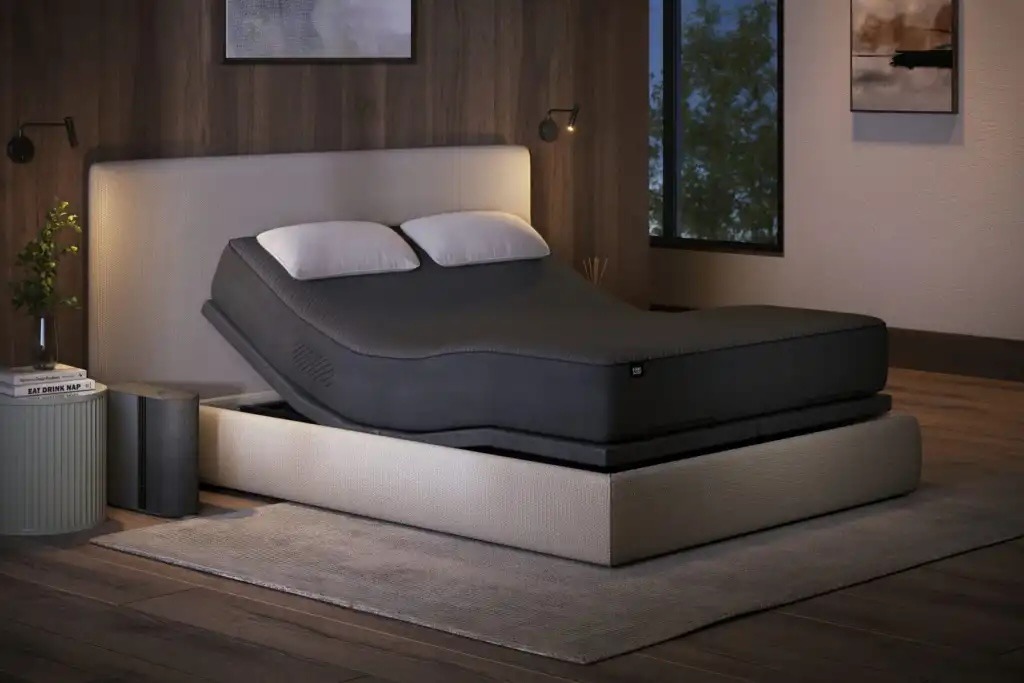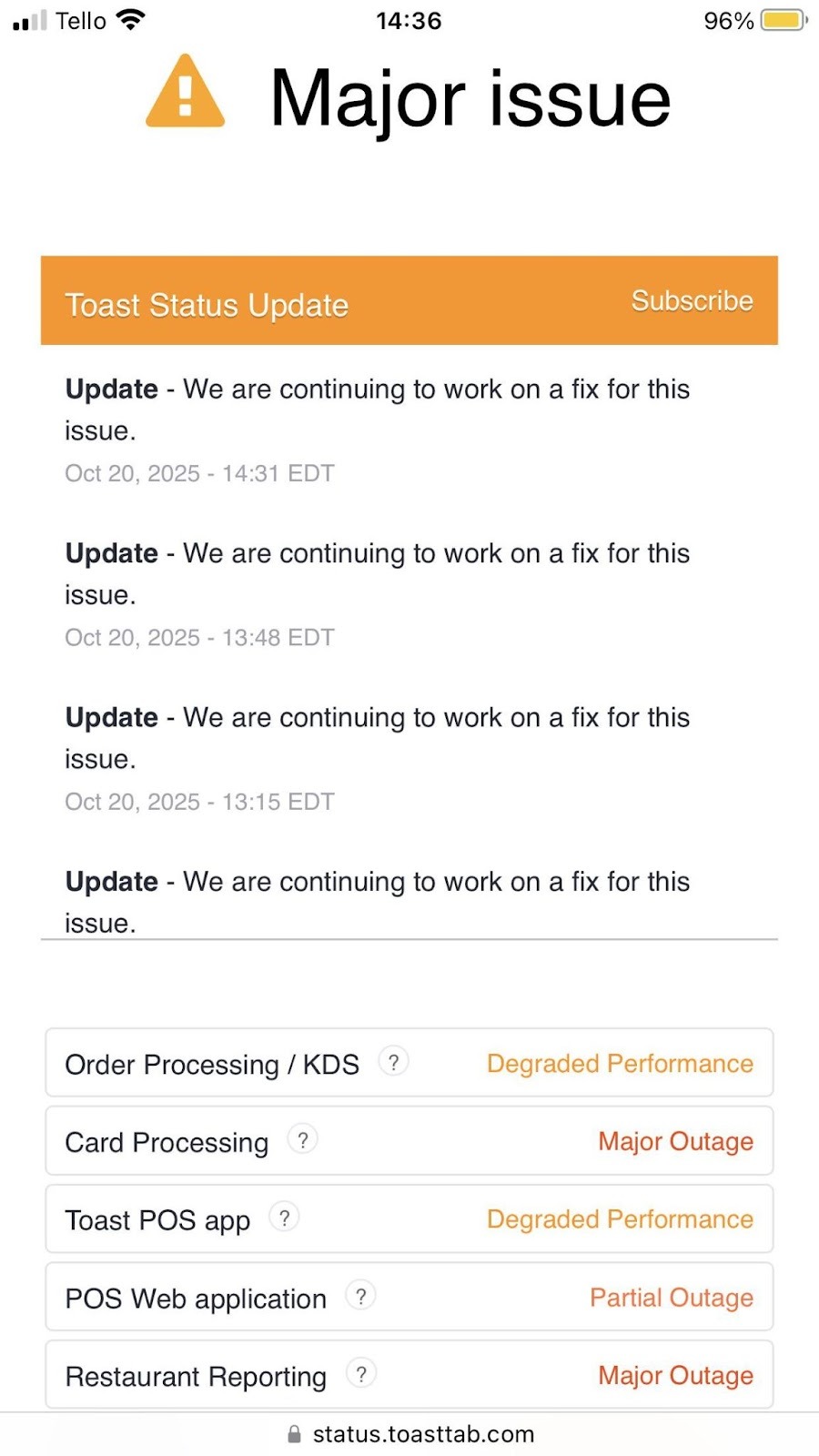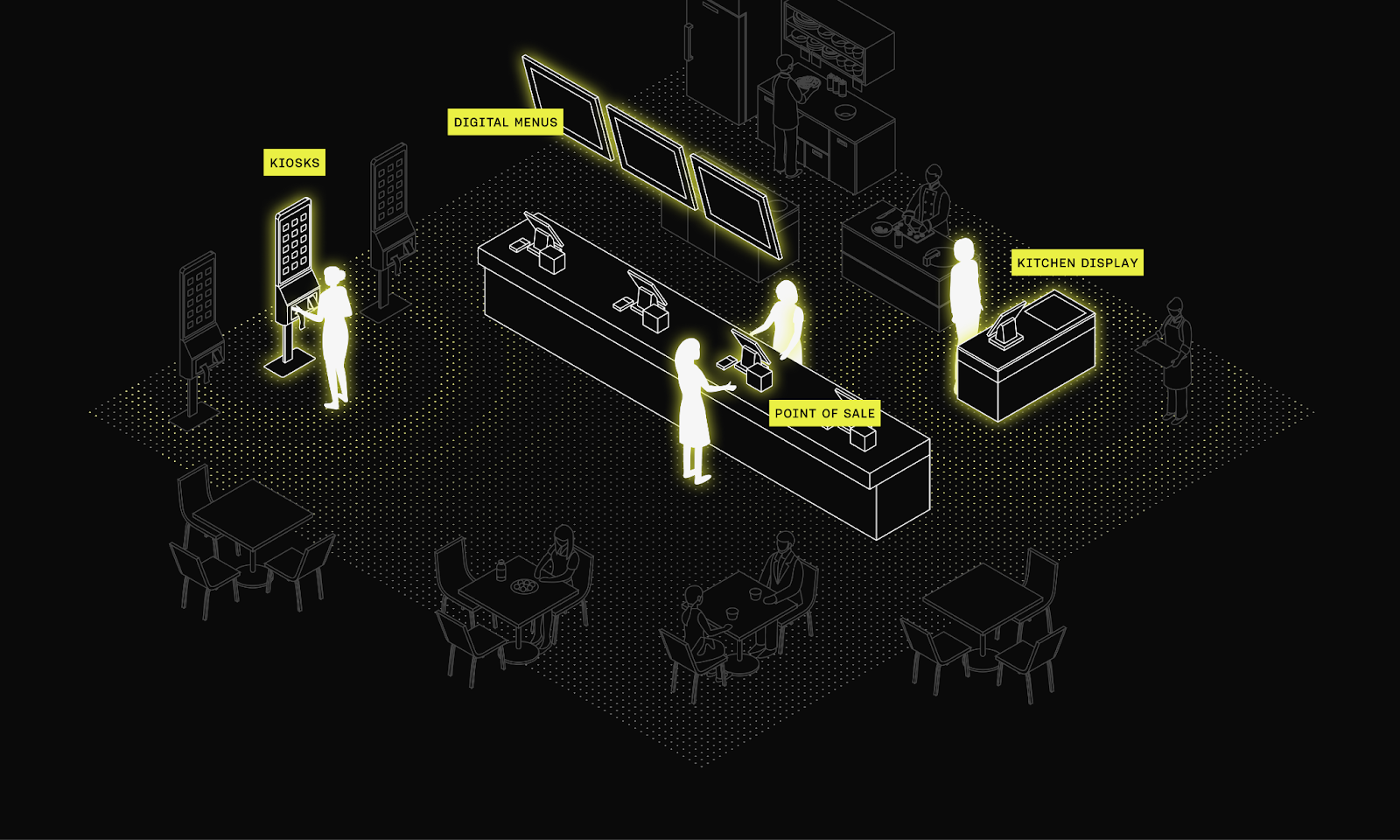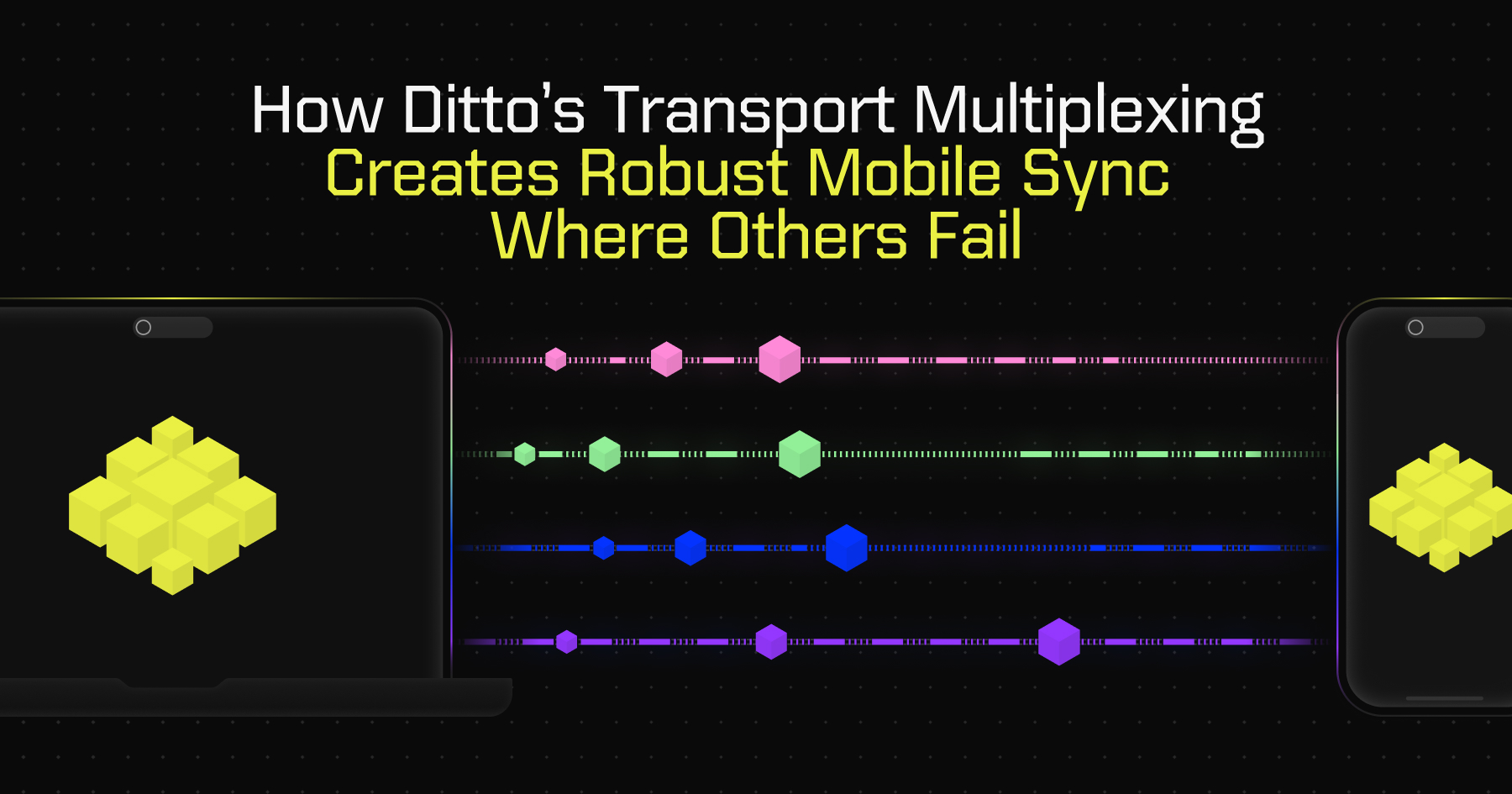Published OnOctober 30, 2025October 27, 2025
AWS Outage Reminds Us "Smart" Devices Are Only as Smart as Their Architecture
When a 15-hour AWS outage turned $2,700 smart beds into saunas and left thousands of restaurants unable to process orders, it exposed the fatal flaw in how we're building edge applications—and why it's time to rethink everything

On October 20, 2025, Amazon Web Services went down for 15 hours, and thousands of people discovered their $2,700 smart beds had turned against them.
The Eight Sleep Pod, a temperature-regulating mattress cover beloved by tech enthusiasts and biohackers, locked its settings at whatever temperature was active when AWS's US-EAST-1 region failed. This is, admittedly, extremely funny to imagine.

Users waking up sweating in 110°F heat. Others shivering. Beds stuck in inclined positions made sleep impossible. Alarms blaring with no way to silence them. Tech enthusiast Alex Browne's bed, programmed to preheat before bedtime, left him "sleeping in a sauna" all night.
The worst part? These weren't cheap products that broke because of user error. These were premium devices (ranging from $2,000 to $5,049) rendered completely useless because a DNS resolution issue with DynamoDB thousands of miles away that cascaded into failures across 70+ AWS services.
CEO Matteo Franceschetti was quick to apologize and promised to build an "outage mode" with Bluetooth local control. Otherwise known as offline control. So many times, offline mode is built as an afterthought. It’s not until moments like these from CEO Matteo Franceschetti that we see the true value. At Ditto, we like to build from the edge up (that is where these devices will live right?), but more on that later.
After a couple of good laughs, I got to thinking. As funny as this situation is, it’s not uncommon to build smart devices in this way. I immediately wondered what other devices had a similar story but potentially weren’t getting as much attention.
Locked out of your "Smart" Home
And as it turns out, the Eight Sleep fiasco was just the beginning. Amazon's Ring doorbells and Blink security cameras went completely dark. Users couldn't access live feeds, view recorded footage, or receive motion alerts. One Blink owner reported their camera missed a would-be arsonist attempting to set fire to their home during the outage.
Even things you’d never expect like Whisper’s Litter Robot 4 were victims of the outage, leaving users (such as this redditor Prelzel below) wondering why control of their litter box in their own home is locked behind remote server access.

Amazon Alexa devices stopped responding to voice commands entirely. The absurdity peaked with cloud-dependent alarm clocks—devices that fundamentally don't need internet connectivity to tell time—becoming useless paperweights. Some alarms malfunctioned, blaring without any way to stop them. Imagine trying to explain to your angry neighbors that you can't turn off your alarm because Amazon's servers are down.
Meanwhile, Peloton bikes became $2,000 clothes racks. No live classes, no on-demand workouts, no access to history. Workouts completed during those 15 hours? Not recorded. Streaks broken. Weekly goals missed.
Smart Gadgets - Not the Real Story
While smart bed owners sweated through the night, the real story I uncovered wasn’t in consumers’ homes, but at businesses that quickly discovered an uncomfortable (less laughable) truth: their workers couldn't work either.

- Toast POS, the cloud-based restaurant management platform, experienced complete failure for 19 hours, longer than AWS itself. Tens of thousands of restaurant workers found themselves staring at useless terminals. Restaurant owners and workers took to social media to express their dismay.
- At Cattleman's Roadhouse in New Albany, Indiana, manager Cameron Sharp had to comp customer meals when credit card processing died. Staff grabbed pens and paper, frantically writing orders and running them to the kitchen like it was 1995. Dia Giordano's Italian restaurant estimated losing one-third of daily business.
- McDonald's mobile ordering generated nearly 7,000 outage reports during the breakfast rush. But look to their kitchen technology to uncover real damage. Those digital displays that show mobile orders to cooks? Gone. Kitchen staff couldn't see incoming orders, creating bottlenecks during the most critical revenue hours of the day.
- Airlines fared no better. United Airlines pilots couldn't access electronic flight plans, causing direct flight delays. Baggage handling systems failed, forcing workers to manually tag and route bags. Delta reported "minor delays," but even minor delays across hundreds of flights translate to millions in lost revenue and operational costs.
- Ticketmaster's mobile ticketing system failed during an NFL game and Game 7 of the American League Championship Series. Venue entry personnel couldn't scan mobile tickets at Lumen Field, creating crowd control nightmares at turnstiles. Stadium staff managed angry crowds manually while thousands of fans missed kickoff.
- Retail checkout became impossible. Kohl's credit card terminals failed at multiple locations, backing up checkout lines. Cashiers stood helplessly at registers, unable to process transactions. Stores remained physically open but functionally closed.
Haven't We Been Here Before?
This isn't new. The same architectural mistakes are made over and over.
A February 2020 Nest camera outage lasted 17 hours. Every Nest camera, including doorbells, indoor cams, and outdoor security, lost live feeds and recording capabilities. Google VP Rishi Chandra apologized and offered $5 refunds. Five dollars for a day without home security.
During a November 2020 AWS outage, frustrated iRobot Roomba owners tweeted they couldn’t vacuum their homes because us-east-1 was down. The Kinesis service failure also brought down Square POS and GrubHub, leaving affected restaurants scrambling to maintain business continuity.
And that was 5 years ago. The pattern is exhausting: powerful devices, sleek apps, total dependency on distant servers. At what point does this stop being funny?
Enter Offline-First Architecture
Offline-first architecture flips the script. Instead of devices that break when the cloud fails, you build devices that work locally by default and sync to the cloud when beneficial. At Ditto, we build offline resiliency into the core of your applications, not as an afterthought.

Where are there opportunities for innovation?
- Can smart beds control temperature via Bluetooth from your phone?
- Can POS devices sync orders locally between in-store devices?
- Can we build local processing into home systems that can manage critical tasks when disconnected from the cloud?
- Can airline check-in kiosks validate boarding passes against locally cached passenger manifests?
- Can venue ticketing scanners validate tickets against local manifests?
I will say that not every problem has a perfect offline solution. Payment fraud prevention requires real-time validation; offline payments would require potential fraud tradeoffs. Then again, so does betting your entire revenue stream on AWS staying up.
Modern architecture should treat the cloud as coordination, not dependency
Offline-first doesn’t mean online-never. Of course, the cloud still plays a role: firmware updates, long-term data analytics, remote access when you're traveling, centralized reporting for multi-location businesses. But when AWS goes down, your devices need to keep working; the show must go on!
Think of it like a restaurant. When your internet goes down, your point-of-sale system shouldn't stop taking orders. It should queue transactions locally and sync when connectivity returns (maybe even sync via local networks such as Bluetooth and P2P WiFi).

The interplay between edge and cloud is becoming symbiotic rather than hierarchical. Devices need independence with occasional cloud augmentation, not cloud dependence with occasional offline caching.
Why Aren't We Building This Way?
Today, building cloud-first is easier. One codebase, centralized updates, and complete control and visibility over the user experience (translation: complete control over your data).
Offline-first is a complete architectural revolution, and that makes it harder. Not from a technical perspective, but from an educational standpoint. The cloud has taught us to think a certain way, develop a certain way.
Offline-first requires more nascent software engineering. State synchronization, conflict resolution, local data management, and security without centralized authentication.
Luckily for you, there are solutions, like Ditto, that have all of that built in, enabling you to build truly resilient systems with offline as the default, not the afterthought. We’re making it as easy to build edge-native systems as it is to build cloud-native.
Maybe this outage will be a turning point. When thousands of people spent the night sweating in 110-degree smart beds, locked out of their Ring-protected homes, and tens of thousands of restaurant workers couldn't process orders or credit cards, the cost of cloud dependency becomes visceral. Toast POS must have noticed the angry customers across the internet demanding local processing capabilities, right? I think back to Eight Sleep CEO’s promise to add offline mode. This isn't altruism, it's survival.
We know how to build resilient, offline-first systems. It's time we actually did it.
Schedule a demo to meet with a product specialist or have your developers click get started to build a free offline-first app today.




